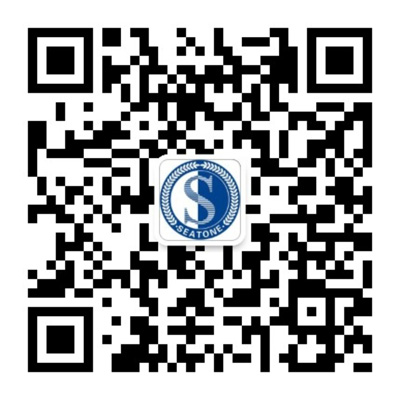
ISO 9001:2000 is used if you are seeking to establish a management system that provides confidence in the conformance of your product to established or specified requirements. It is now the only standard in the ISO 9000 family against whose requirements your quality system can be certified by an external agency. The standard recognizes that the word "product" applies to services, processed material, hardware and software intended for, or required by, your customer.
There are five sections in the standard that specify activities that need to be considered when you implement your system. You will describe the activities you use to supply your products and may exclude the parts of the Product Realization section that are not applicable to your operations. The requirements in the other four sections - Quality management system, Management responsibility, Resource management and Measurement, analysis and improvement - apply to all organizations and you will demonstrate how you apply them to your organization in your quality manual or other documentation.
Together, the five sections of ISO 9001:2000 define what you should do consistently to provide products that meets customer and applicable statutory or regulatory requirements. In addition, you will seek to enhance customer satisfaction by improving your quality management system.
ISO 9004:2000 is used to extend the benefits obtained from ISO 9001:2000 to all parties that are interested in or affected by your business operations. Interested parties include your employees, owners, suppliers and society in general.
ISO 9001:2000 and ISO 9004:2000 are harmonized in structure and terminology to assist you to move smoothly from one to the other. Both standards apply a process approach. Processes are recognized as consisting of one or more linked activities that require resources and must be managed to achieve predetermined output. The output of one process may directly form the input to the next process and the final product is often the result of a network or system of processes. The eight Quality Management Principles stated in ISO 9000:2000 and ISO 9004:2000 provide the basis for the performance improvement outlined in ISO 9004:2000.
The nature of your business and the specific demands you have will determine how you apply the standards to achieve your objectives.
Here are a few examples:
Example 1
A metal parts fabricating company used ISO 9000:2000 to develop a plan to implement their quality management system. When they were ready, they prepared a quality manual and quality system procedures as required by ISO 9001:2000, excluding the requirements covering product design and development because their products are made to designs prepared by their customers. Later, in order to bid on the supply of parts to a major automotive company, they adapted their quality system to meet the sector specific requirements of ISO/TS 16949.
Example 2
A welfare agency decided to establish a quality improvement strategy. It adopted ISO 9004:2000 as the basis for planning and implementing its system. The agency found that ISO 9000:2000 provided very useful additional guidance and plans to seek certification to ISO 9001:2000 to gain more credibility.
Example 3
A washing machine manufacturer had a well-established company culture of continual improvement and effective production control. The management decided to improve the company's development processes and to implement ISO 9001:2000 to obtain certification for commercial purposes. The company used ISO 9004:2000 to guide its improvement processes and ISO 10006:1997 to develop a project management plan.
Example 4
A large chemical processing company was required by its major customers to gain registration/certification to ISO 9001:2000. In order to obtain additional benefits, company leadership planned a comprehensive management strategy based on ISO 9000:2000 and ISO 9004:2000. A thorough review of their business processes indicated that all elements of ISO 9001:2000 were applicable to their quality management system. The company used ISO 10013:1999 to guide the development of quality documentation in its various production divisions and ISO 10015:1999 for guidance in the preparation of training plans for their employees.
Example 5
A firm of international lawyers wanted to improve their client management processes and to achieve registration/certification to ISO 9001:2000. Their quality management system provides for the design and development of new services such as international tax planning and modifying traditional services to meet the requirements of new or amended legislation. They included purchasing control to cover the selection of computer hardware and software, as well as purchasing the services of specialist lawyers as needed. After successfully implementing ISO 9001:2000, they used the self-assessment guidelines of ISO 9004:2000 to monitor their progress as they improved their quality management system.
Example 6
A computer software developer serving a niche market recognized that as their user base expanded they would be faced with issues concerning product management and configuration control. Changes to base products, user hardware and regulatory requirements were compounding customer service issues. ISO 9004:2000 provided the guidance they needed to establish documented procedures to control process change and improvement. ISO 10006:1997 and ISO 10007:1995 provided additional assistance as they managed the project and prepared procedures for configuration management. They later acquired another software developer and were able to use their quality management system to integrate the acquisition into their own structure very quickly with a minimum of disruption to customers.
Example 7
A bank decided to implement a quality management system for its on-line Internet banking services. They ensured that their quality manual made clear that their other conventional banking services were not included in their quality management system. While adopting the requirements of ISO 9001:2000, the bank obtained guidance from ISO 9000:2000 to interpret words and phrases used in the standard for their application. They applied all the requirements of Clause 7, recognizing that design and development is an important part of creating new service processes. The bank used ISO 10013:1995 to prepare their documentation, which they posted on their internal computer network to ensure current procedures are available to their staff.

 鲁公网安备 37020602000060号
鲁公网安备 37020602000060号